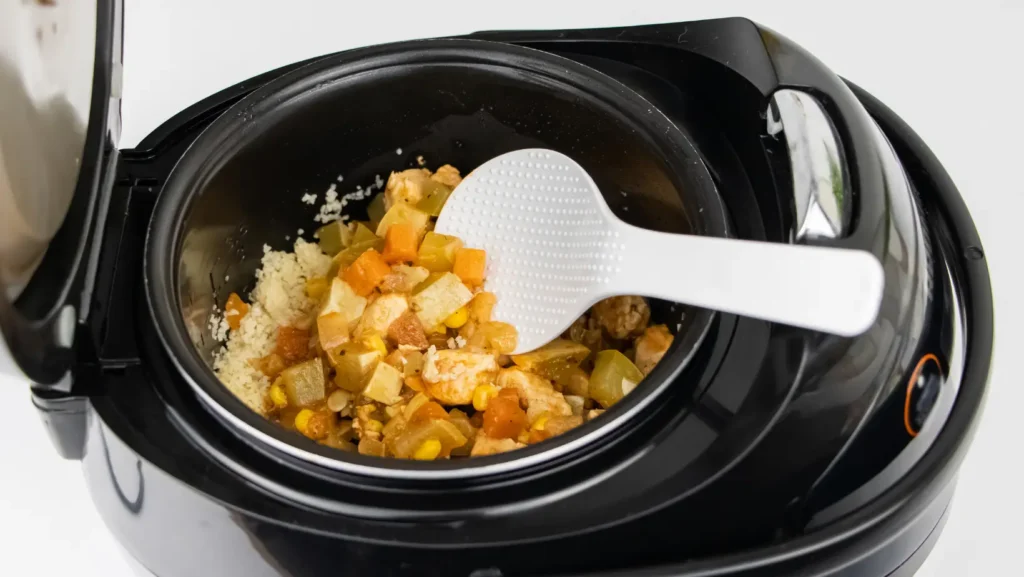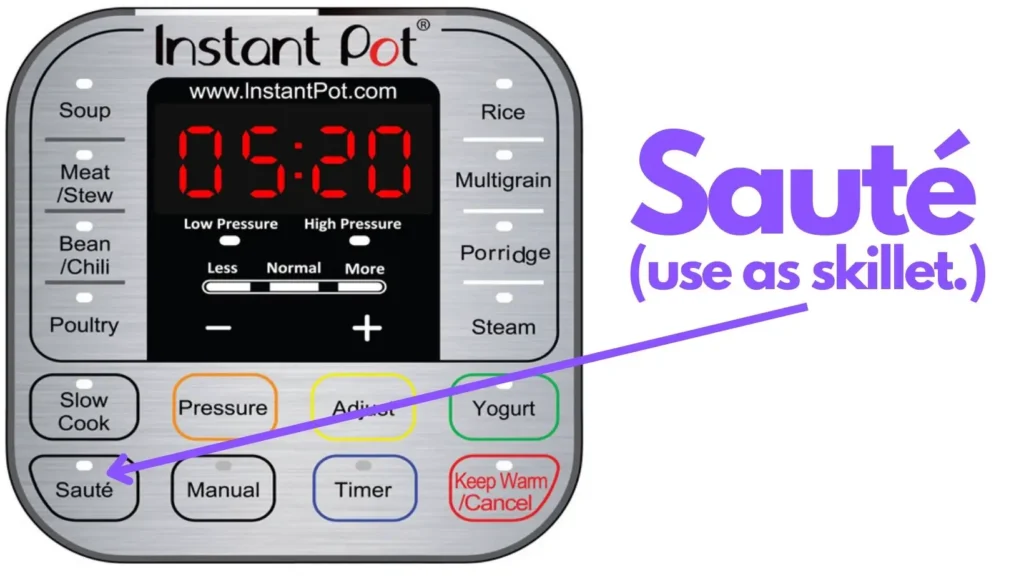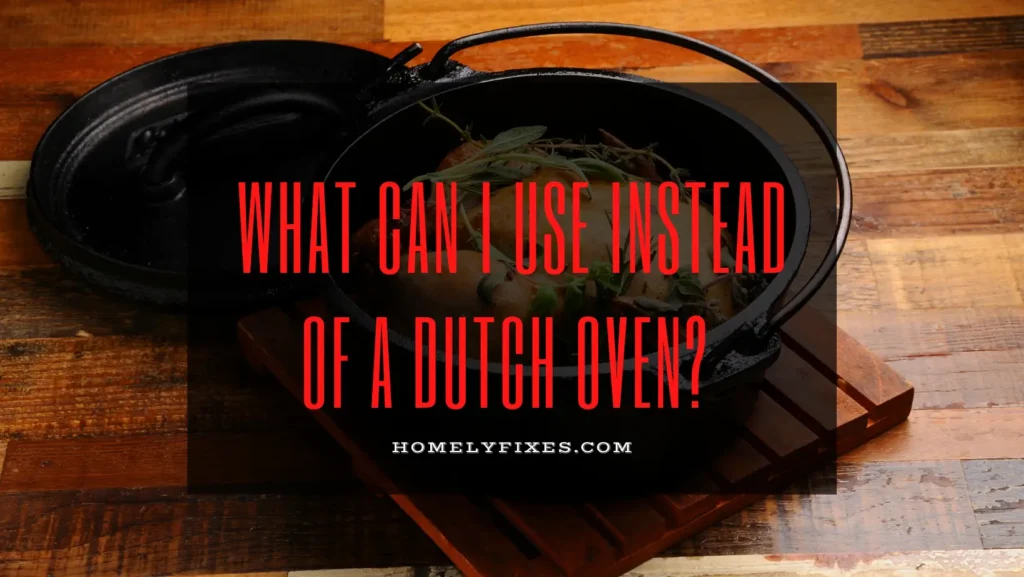
The classic Dutch oven is a great tool for anyone looking to learn how to make delicious meals from scratch. They’re easy to maintain and very durable. However, sometimes, you just don’t want to spend the money on a brand-new pan. Luckily, there are some fantastic substitutes that can do the job just as well.
From a Moroccan-inspired to a slow cooker and crock pot, here are ten of our favorites.
Best Dutch Oven Substitute
The best substitute for a traditional Dutch oven would have to include the slow cooker. They both use similar techniques for searing meats and vegetables. However, there are some key differences between the two. A Dutch oven is designed specifically for searing foods over high heat.
While a slow cooker does allow you to sear food, it doesn’t work well for boiling water. You’ll find that most slow cookers cant handle recipes that require high temperatures.
However, Electric slow cookers have come far beyond the one-off kitchen gadget. Nowadays, many models have multiple settings, including sauteing, simmering, warming, steaming, poaching, baking, braising, stewing, and defrosting. Some even have a combination of features such as a convection option, timer, auto shut-off, and programmable cooking times.
If you’re looking for a slow cooker instead of a ditch oven, you might want to consider an electric cooker with a saute function. This type of cooker can be used like a Dutch oven, but can also be converted to a slow cooker, so you can cook everything in one pot.
However, your options are not limited to electric slow cookers. Here are 10 of our favorites things to use instead of a dutch oven
1. Crockpot
Crockpots are one of the earliest and most popular types of slow cookers. They work similarly to other slow cookers, with the main difference being that the inside of the crockpot is made of stoneware instead of metal. This stoneware material is exceptional at retaining heat and sets crockpots apart from other slow cookers.
They are a great way to cook various food items, from soups and stews to casseroles and even desserts. Because they cook food slowly and evenly, crockpots are ideal for making both flavorful and moist dishes.
You can set the temperature and leave the CrockPot to simmer away while you enjoy the rest of your day without worrying about cooking! Plus, they can often be found for a fraction of the price of a Dutch Oven. So if you’re looking for a quality slow cooker that won’t break the bank, then a Crockpot is the way to go!
2. Casserole Dish
If you’re looking to make a dish that requires a little more liquid, like a stew or soup, then a casserole is a great alternative to the dutch oven. The key is to ensure that the lid fits snugly so that all the steam stays inside the pot and doesn’t escape.
You will also have to adjust the cooking time accordingly. For example, a casserole usually takes longer than a dutch oven because they are mostly made of materials that you cannot place on a direct heat source.
This means If you’re using a casserole as a dutch oven substitute, you should plan to saute or sear your ingredients in a frying pan before placing them inside the casserole.
3. Tagine Pot
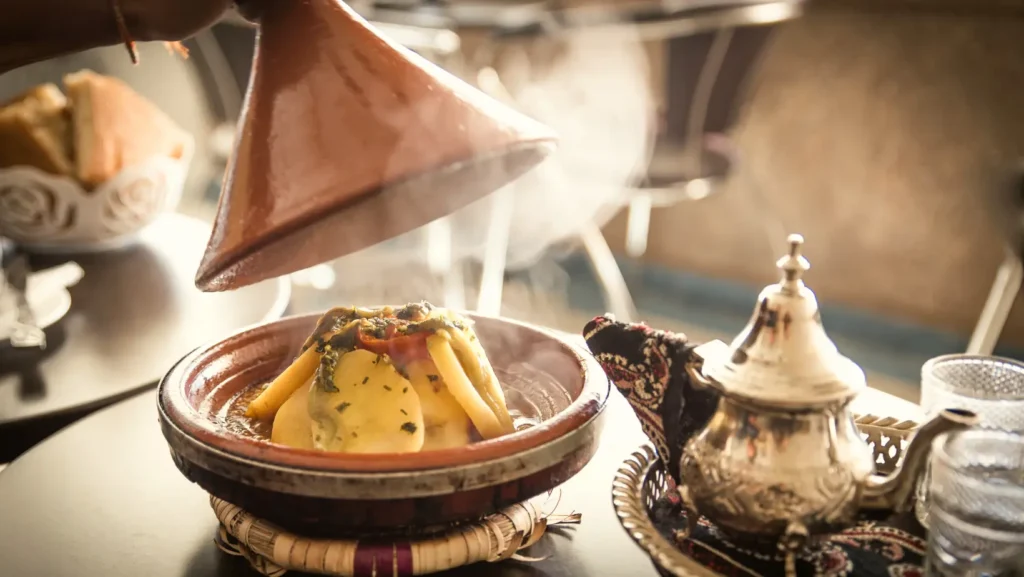
The Moroccan tagine pot is one of those pieces of kitchen equipment that you might overlook because it doesn’t look like much. But once you start cooking in it, you’ll see how well it works. A tagine pot uses the same slow cooking techniques as a traditional Dutch oven, ensuring that the flavors are evenly distributed throughout the dish.
Unlike a Dutch oven, however, a tagine pot is designed specifically for stovetop use. This makes it easier to cook multiple dishes simultaneously in the same pot.
Because a tagine pot consists solely of a bottom pan and conical lid, it is also very versatile. You can braise, sauté, or deep-fry your meats and veggies in the tagine pot and allow them to slowly reduce in their flavorful juices for several hours.
The unique feature of a tagines pot is the vent at its top. The vent allows the food inside to gently simmer in its spices and juice while being gradually reduced. As a result, the food cooks more evenly and retains its moisture better.
4. Stockpot
A heavy bottom stock pot with a tight lid is a great substitute for a Dutch oven. This is because the stock pot is able to retain heat better, making it ideal for slow cooking and braising. Additionally, the tight lid ensures that moisture is not able to escape, meaning that your food will come out just as moist and tender as it would if cooked in a Dutch oven.
You can also saute and sear in the pot and use it in the oven. just ensure:
Keep the oven temperature at a low 250 to 250 to 275 degrees Fahrenheit to make the stockpot function as a Dutch oven
Ensure you keep an eye on the liquid level and top up if required.
5. Metal Pot
Metal pots are perfect for slow cooking because they conduct heat extremely well. They are also easy to clean and maintain. If you want to get the most out of your metal pot, you need to season it properly. Seasoning helps prevent rust from forming over time.
To do this, simply rub the pot’s surface with oil and sprinkle some salt on it. Then, cover the entire pot with aluminum foil and bake it at 350 degrees Fahrenheit for about 30 minutes. Once the pot has cooled down, wash it thoroughly with hot water and dry it completely.
6. Pressure Cooker
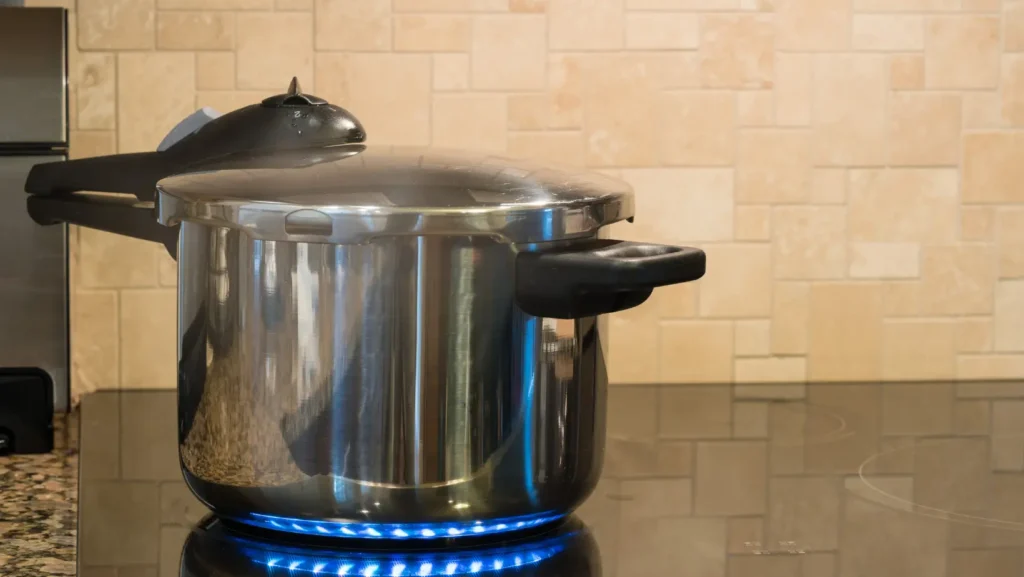
Pressure cookers work by applying high pressure to liquids such as soups, stews, sauces, and stocks. Because these liquids are sealed off from the air, they don’t boil away. Instead, they release steam through holes in the lid.
This process creates a vacuum effect which forces the steam into the food. It also increases the rate at which the food reduces in size.
As a result, foods that normally take a long time to cook in other ways, such as meatballs, chicken breasts, and vegetables, end up ready in less than half the usual amount of time.
7. Cast iron Skillset
This is particularly good for sauteing and searing. it is suitable to be used in both the oven and the stovetop.
It is best to use cast iron skillets when you have a large quantity of food to cook. This way, you won’t need to stir the food constantly during cooking. we wouldn’t also advise using the skillset to slow cook because it does not conduct heat efficiently.
8. Clay Pot
Clay pots work in much the same way as a Dutch oven. They’re perfect for slow-cooking stews, casseroles, and other one-pot meals.
they were once produced ”naked” (without any glaze), but now clay pots are often coated with a nonstick coating or glazed to handle any heat source, including an open fire.
If all you have is a clay pot, then you should first coat it with a layer of vegetable oil before seasoning it. You can then add a thin layer of olive oil or butter to help seal the pot.
If all you have is a clay pot, you can use it on a direct heat source, provided you use a heat diffuser between the direct heat and the pot. This will help to distribute the heat evenly and prevent the pot from cracking.
9. Braiser
Dutch ovens and braisers are two great kitchen tools that can be used to prepare the same type of dishes. However, there are a few key differences between the two.
Dutch ovens are typically made from heavier materials like cast iron, while braisers are often made from lighter materials like aluminum. This means that Dutch ovens can better retain heat, making them ideal for slower cooking methods like braising.
Another difference is in the shape of the two pots. Dutch ovens are typically round with high sides, while braisers are usually oval-shaped with lower sides. This difference in shape means that braisers have more surface area, making them better for browning.
10. Roasting Pans
A roasting pan is essentially a super-sized version casserole dish. You don’t even need to buy a fancy set; most grocery stores carry a basic model. But there are several differences between a traditional casserole dish and a roasting pan. First off, a roasting pan holds much more volume than a standard casserole.
This makes it ideal for feeding a lot of people, especially since you’ll usually be able to get away with serving fewer portions per person. Also, because the sides aren’t as high as the typical casserole, you won’t necessarily have to worry about overflowing food onto the table.
If you want to use your roasting pan for more than just Thanksgiving, you might consider buying a couple of extra pieces of equipment.
For instance, you could invest in a rack, which allows you to place the meat directly over the heat source while keeping it above the liquid.
Or, if you plan on baking breaded items like chicken wings, you’ll definitely want to get yourself a wire cooling rack. These racks allow air to circulate around the meat, preventing it from steaming too quickly.
11. Frying Pan
A frypan is a smaller version of a skillet and may need a lid to function like a dutch oven. It’s not really meant for deep frying but rather for shallow frying. So, when you think of using a frypan, you’re probably thinking of using it for things like sauteeing vegetables or searing meats.
12. Pyrex Glass Casserole
I have often asked myself, ‘Can I use a pyrex pot instead of a dutch Oven’? The answer is YES, but you must adjust some things to do so.
We all know the glass brand named Pyrex. The oval Pyrex baking dishes pictured above will cook the exact same recipes a dutch oven will, the exception being that glass is lighter and does not hold up well to high heat.
If you want to bake something in a dutch oven that needs to be cooked over a long period of time, such as a stew, then you are out of luck. However, you can use a Pyrex casserole for cooking something similar to what you could make in a dutch oven.
The lid will not be heavy to keep the moisture in, so you don’t want to put too much food inside. Also, the Pyrex casserole won’t work well in the microwave, so you cannot reheat food in one. However, if you are looking for a great alternative to a dutch oven, you might just find what you are looking for here.
13. Ceramic Pot
If you’re looking for a vessel that can handle Dutch oven recipes and also go into the oven if needed, then a ceramic pot is a great option. This type of pot is perfect for cooking stews, roasts, and other one-pot meals. Plus, ceramic is a great material for even heat distribution, so you can be sure your food will come out cooked evenly every time.
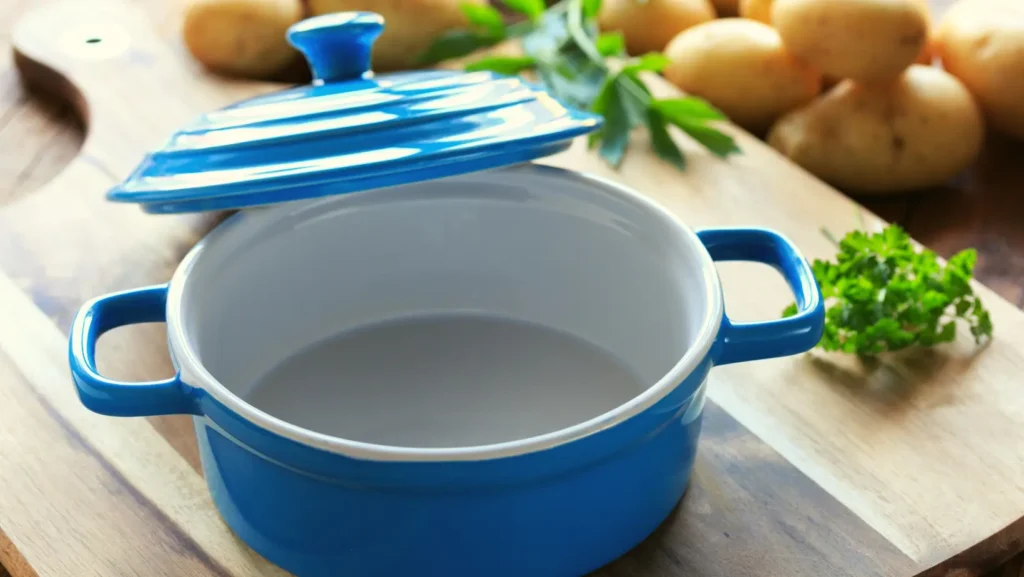
14. Cazuela pot
Cazuelas are round pots made from clay. They come in different sizes, but most hold about four cups. In Spain, where they originated, they’re traditionally used for cooking beans. We love baking beans in one because it takes less space than a Dutch oven and makes delicious baked beans.
You can use the same pan to soak the dried beans to soften up, then plop the pot on the stovetop and cook them down until they’re tender. A cast iron skillet or an oven-safe metal pot can work as a Dutch oven substitute. But why not go the traditional way instead?
FAQS On What Can I Use If I Don’t have a Dutch oven?
What is similar to a Dutch oven?
The closes dutch oven substitute is a stockpot. Just make sure it has a tight-fitting lid to trap in all the heat and flavors.
What is the Difference Between a Dutch Oven and a Casserole Dish?
A Dutch oven is a heavy pot that is usually made out of cast iron or enameled cast iron. It has a tight-fitting lid, which makes it ideal for braising and roasting. A casserole dish, on the other hand, is a baking dish that is typically made out of glass or ceramic. It is shallow and has a wide opening, which makes it ideal for baking and serving food.
What Temperature Does a Dutch Oven Cook At?
A Dutch oven can be heated up to 350 degrees Fahrenheit. They are an incredibly versatile tool that can be used to bake bread, slow cook, and saute to create various dishes.
Does Food Cook Faster in a Dutch Oven?
In general, Dutch ovens are not going to help food cook any faster. However, they can help food cook more evenly, which can be helpful if you’re trying to avoid overcooking or undercooking your food.
Can I Use a Crockpot Instead of a Dutch Oven?
Both crockpots and Dutch ovens can be used for slow cooking, but there are a few key differences to keep in mind. Crockpots are typically smaller and have a lower cooking temperature than Dutch ovens, so you may need to adjust your recipe accordingly. Additionally, crockpots typically have a tight-fitting lid that helps to trap moisture, whereas Dutch ovens typically have a lid that allows some steam to escape.
